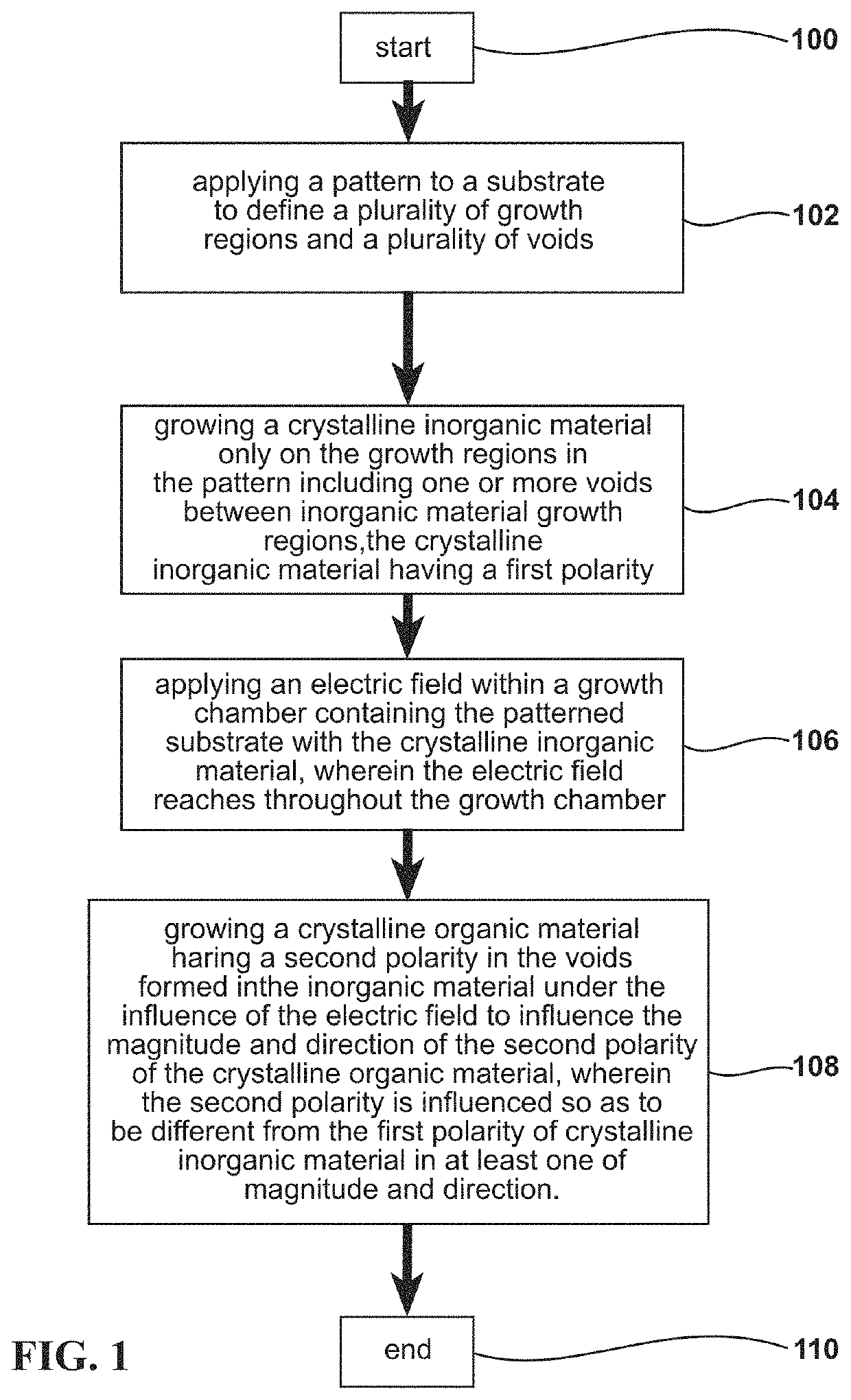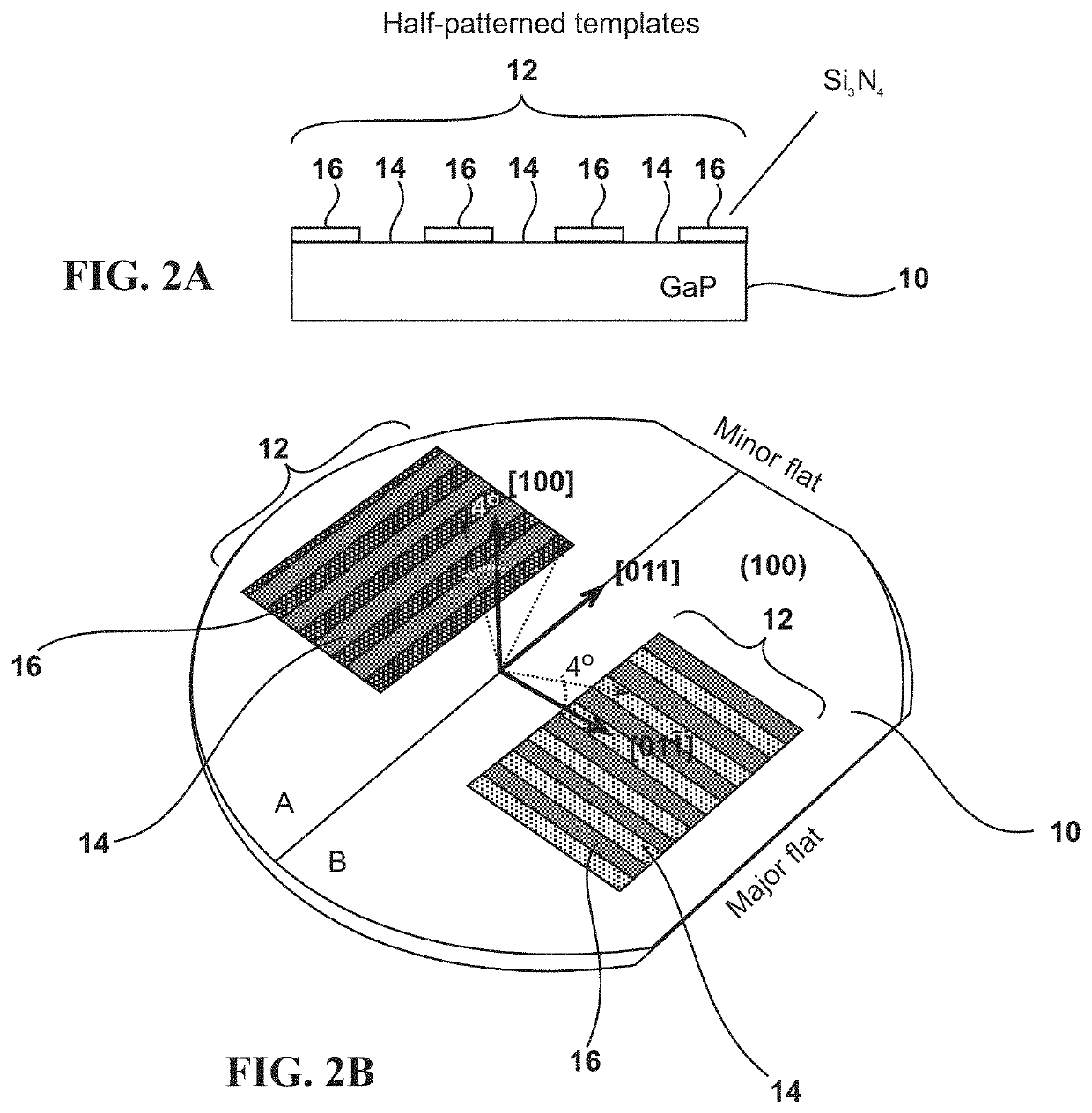Growth/fabrication of organic-inorganic quasi phase-matching structures for frequency conversion devices
a quasi-phase-matching structure and frequency conversion technology, applied in the direction of crystal growth process, semiconductor laser, instruments, etc., can solve the problems of difficult, costly and time-consuming process for fabricating such op templates, and achieve the effects of wide range of transparency, high nonlinear susceptibility, and cost-effective process
- Summary
- Abstract
- Description
- Claims
- Application Information
AI Technical Summary
Benefits of technology
Problems solved by technology
Method used
Image
Examples
second embodiment
[0093]With regard to the invention, inorganic, semi-organic and organic electret nonlinear materials—crystalline, polycrystalline, and amorphous (e.g. glasses and polymers)—have some indisputable advantages in comparison to their inorganic counterparts. Such advantages include their higher (some times more than one order of magnitude higher) nonlinear susceptibility and ultrafast response that allows the achievement of much larger nonlinear optical (NLO) efficiency. In addition, they can be grown from solutions, melts and vapors at relatively low temperatures—usually less than 300° C., even <100° C., using a number of different relatively simple and affordable techniques. However, the development of organic materials, which can be divided into two parts, i.e. organic crystals and organic polymers, also has its own issues briefly described below.
[0094]For high-speed second-order NLO applications, such as electro-optics (EO), second-harmonic generation (SHG), optical parametric oscill...
first embodiment
[0095]The preparation of inorganic semiconductor materials for nonlinear optical applications is expensive and complex, while organic materials are much cheaper and, due to their lower melting points, can be prepared or grown in less-energy consuming processes using simpler and relatively low-tech equipment. The growth techniques for most inorganic materials require the use of poisonous, flammable and corrosive gases such as arsine and phosphine. In contrast, neither the inorganic materials of the present invention, nor the processes of their fabrication contain or use dangerous chemicals. The preparation of orientation-patterned templates based on inorganic semiconductors itself is a complex, time-consuming process that often requires the use of expensive scientific equipment such as MBE (molecular beam epitaxy). In addition, the prior art template preparation process for OP templates of one material is not a universal process but rather a unique technique for each particular inorg...
third embodiment
[0130]Because of the miniature size of the structure, it is possible for the QPM matrix to be placed within a Second Harmonic Generation (SHG) device and even in an OPO (Optical Parametric Oscillator) optical set, according to the invention. Thus the whole polarization procedure may be directly performed in-situ, tuning the polarization by additional light “chargings” or / and partly electrical “dischargings” until achieving a maximal output.
[0131]The nonlinear susceptibility of many electrets is significantly higher than the traditional nonlinear susceptibility of the inorganic semiconductor materials such as GaP, GaAs, ZnSe, GaN, etc. The refractive index of the electrets is usually smaller. This means that one can expect self-focusing of the beams propagating throughout the structure (FIGS. 12A-12C). FIGS. 12A-12C illustrate structures having alternating layers of inorganic materials and organic / electret materials, as described above in the various embodiments. FIG. 12 A illustrate...
PUM
| Property | Measurement | Unit |
|---|---|---|
| thick | aaaaa | aaaaa |
| wavelengths | aaaaa | aaaaa |
| temperatures | aaaaa | aaaaa |
Abstract
Description
Claims
Application Information
 Login to View More
Login to View More - R&D
- Intellectual Property
- Life Sciences
- Materials
- Tech Scout
- Unparalleled Data Quality
- Higher Quality Content
- 60% Fewer Hallucinations
Browse by: Latest US Patents, China's latest patents, Technical Efficacy Thesaurus, Application Domain, Technology Topic, Popular Technical Reports.
© 2025 PatSnap. All rights reserved.Legal|Privacy policy|Modern Slavery Act Transparency Statement|Sitemap|About US| Contact US: help@patsnap.com



